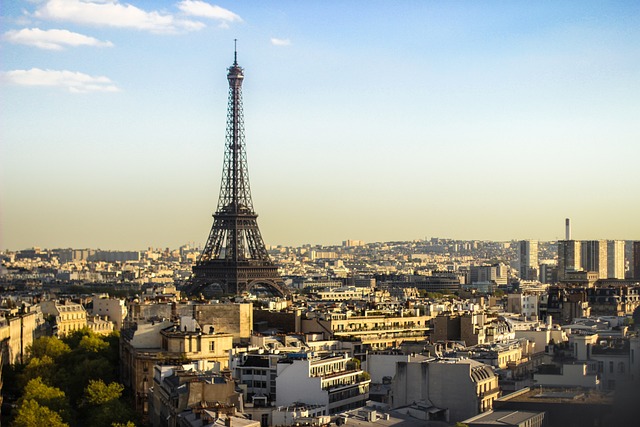Art in Motion: Discovering the Soul of Tour Museums
In the realm of cultural experiences, few things are as exhilarating as visiting a museum. For many, these institutions serve not just as repositories of art, history, and natural wonders, but as dynamic spaces where ideas, emotions, and connections come to life. The phrase “Art in Motion” encapsulates the transformative power of museums, especially when one embarks on a journey to explore their many facets. This article intends to guide you through the enchanting world of tour museums, revealing their secrets, motivations, and the profound impact they impart upon visitors.
The Essence of Tour Museums
Tour museums are unique entities within the landscape of art and culture. Unlike traditional museums that may focus only on static displays, tour museums engage visitors through guided experiences that integrate education with exploration. They combine the traditional elements of curation with live demonstrations, interactive exhibits, and storytelling, creating a holistic experience that resonates with a diverse audience.
At the heart of a tour museum lies the understanding that art is not merely an artifact to be observed but a living entity that communicates with its viewers. This approach invites visitors to immerse themselves in the narratives that shape each piece, fostering an emotional connection that transcends mere observation. Through this synergy, art transforms from static images on a wall to vibrant narratives waiting to be revealed.
Architectural Wonders and Cultural Significance
The architecture of tour museums plays a critical role in setting the stage for the experiences within. Many of these institutions are designed to reflect the cultural lineage they represent, acting as a bridge between past and present. Iconic examples include the Guggenheim Museum in New York, the Louvre in Paris, and the Uffizi Gallery in Florence, each melding artistic vision with functionality.
These architectural masterpieces invite visitors not only to appreciate the art within but also to engage with the building itself. The open spaces, well-thought-out circulation paths, and natural light create an atmosphere conducive to exploration. This melding of art and architecture reinforces the idea that both forms serve to enrich human experience.
Dynamic Exhibitions and Thematic Tours
One of the most captivating aspects of tour museums is their commitment to dynamic exhibitions and thematic tours. These institutions continuously evolve their offerings, ensuring that there is always something new and relevant for visitors. Curated exhibitions might focus on specific artists, movements, or cultural themes, providing an ever-changing tapestry of experiences for patrons.
Through themed tours, museums can cater to varied interests, whether a visitor is passionate about contemporary art, historical artifacts, or interactive technology. These guides—often experts in their fields—illuminate the meaning and context behind the works displayed, making connections that might otherwise remain obscured. By navigating through each gallery with a knowledgeable guide, attendees gain insights that enrich their understanding and foster a deeper appreciation for the art on display.
Interactive Art Experiences
In today’s digital age, the traditional role of museums is undergoing a transformation. Many tour museums have embraced technology as a means to enhance visitor interaction. Augmented reality experiences, interactive touchscreen displays, and virtual reality tours are becoming increasingly commonplace. These innovations create immersive environments where users can engage with the stories behind the art.
Imagine walking through a gallery and using an app to view a painting as it would have originally appeared or hearing the thoughts of the artist in a pre-recorded audio guide. Such experiences amplify the emotional resonance of art, allowing for a multidimensional exploration. Additionally, the use of social media encourages sharing and dialogue, extending the museum experience beyond its physical walls. Visitors become ambassadors of their journey, sharing their insights and discoveries with a broader audience.
The Role of Education in Museums
Education is a cornerstone of many tour museums. By fostering a love of learning through art, these institutions prioritize programs that engage learners of all ages. Workshops, lectures, and interactive activities can deepen understanding and ignite passion for cultural history and artistic expression. In many cases, museums cultivate partnerships with schools and community organizations, facilitating outreach initiatives designed to make art accessible to underrepresented groups.
These educational programs empower participants not only to appreciate art but to create it. Many museums offer classes led by professional artists, allowing participants to explore their creativity in a supportive environment. It’s not simply about observing the masters but about nurturing the next generation of creatives.
A Space for Reflection and Connection
While tour museums are vibrant centers for activity, they also serve as spaces for introspection and connection. The act of viewing art can evoke powerful emotions; the quiet contemplation afforded by a well-designed museum creates the perfect setting for reflection. Visitors often find themselves contemplating their own experiences through the lens of art, uncovering the universal themes that resonate across cultures and time periods.
In an increasingly connected world, the need for shared experiences has never been greater. Museums provide an opportunity for individuals to gather, converse, and form community bonds over their shared love of art. Special events, such as exhibition openings or artist talks, promote dialogue among attendees, fostering relationships built on mutual interests and experiences.
Sustainability and Social Responsibility in Museums
As stewards of culture and history, many tour museums are embracing sustainability and social responsibility. These institutions recognize their role in promoting awareness about environmental issues and supporting ethical practices. Initiatives such as reducing energy consumption, sourcing materials responsibly, and hosting community-focused exhibitions highlight the commitment of many museums to lead by example.
Incorporating diverse voices in their programming is another way that museums are taking steps toward social responsibility. Showcasing underrepresented artists, exploring global narratives, and creating dialogues around pressing societal issues helps to foster a sense of inclusion and belonging. By doing so, museums not only highlight the spectrum of human experience but also challenge prevailing narratives within the art world.
The Future of Tour Museums
As we look ahead, the future of tour museums appears to be filled with promise and potential for further innovation. The melding of technology, education, and community engagement underscores a commitment to evolving the museum experience beyond conventional boundaries. With the rising interest in experiential learning and cultural exchange, tour museums will remain at the forefront of creating connective experiences that honor the legacies of the past while embracing the complexities of contemporary life.
As art continues to evolve, museums will play an essential role in interpreting and preserving these changes for future generations. They stand as beacons of creativity, inviting everyone to explore and discover the extraordinary depth of the human experience through the lens of art.
Conclusion
In conclusion, tour museums are more than institutions; they are living, breathing spaces that capture the essence of human creativity and experience. Their commitment to dynamic exhibitions, innovative technology, and community engagement enriches our collective understanding of the world and ourselves. By embracing the idea of “Art in Motion,” we open ourselves to endless possibilities of connection, reflection, and transformation. Next time you step through the doors of a museum, remember that you are not merely an observer; you are part of a vibrant tapestry woven with the threads of history, culture, and artistry.


